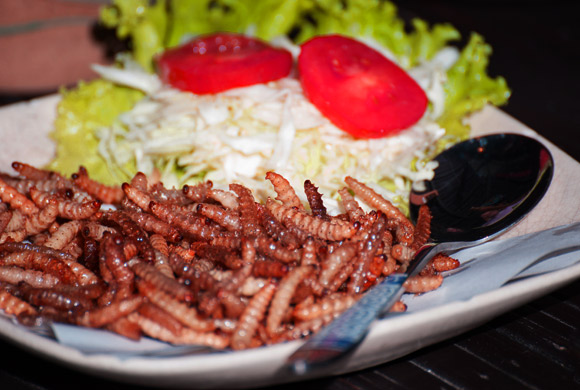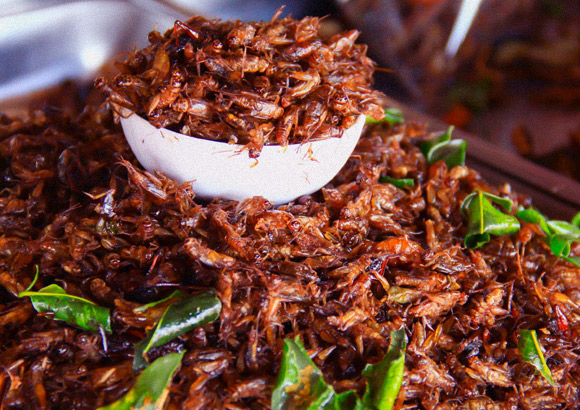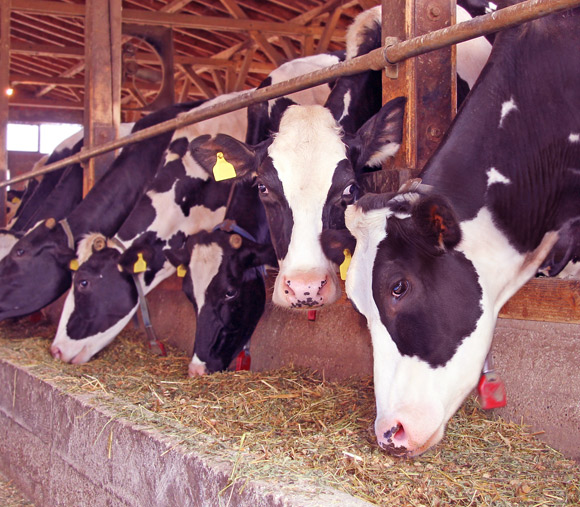Despite the disdain they evoke for some of us, researchers see insects as the new superheroes that will save the world from starvation. Are they really a practical alternative to meat?
By 2050, the world population is expected to grow to about 9.6 billion people – an unprecedented number in history. As time goes by, there is a rising concern that it will not be possible to feed everyone with existing land resources and current agricultural methods. The greatest fear is of a deficiency in protein, which at least in the Western world, comes mostly from the meat industry.
An interesting alternative attracting much attention in recent years is the option of using insects as an additional food source. According to the UN’s Food and Agriculture Organization (FAO), edible insects contain a high concentration of protein, amino acids, fatty acids and vitamins such as biotin and folic acid.
A 2016 study of scientists from China and the UK indicated that crickets, grasshoppers and mealworm beetles actually contain more calcium, zinc and magnesium than a sirloin steak, while buffalo worms contain more iron than chunks of red meat. In addition to their nutritional value, farming insects is much more environmentally friendly than raising cattle, which is responsible for the release of 14 percent of the greenhouse gas methane, and is responsible for widespread emission of poisonous ammonia gas. The amount of food that insects consume is 80% less than that required by cattle to produce the same amount of protein, and the area required for growing insects is also much smaller.

Containing a high concentration of protein, vitamins and fatty acids. Edible butterfly larvae | Photo: Shutterstock
Cricket crunch
Every year, on the island of Madagascar in the Indian Ocean, in the dry season before rice harvest, markets offer a refreshing culinary alternative: about 65 different species of insects that provide a main source of protein for the population. A similar trend is observable is other countries in the tropics and sub-tropics, which make use of more than two thousand species of insects as food, from beetles and crickets, to wasps, dragonflies, termites and ants.
In almost all these regions, insects serve as a food additive that enables residents to supplement their diet with nutrients. The residents of Papua New Guinea for instance, feed on the larvae of palm weevil, that contain large amounts of the amino acids lysine and leucine, along with sweet potatoes that contain a high concentration of other amino acids such as tryptophan – that the beetles do not contain.
Most of the insects in tropical countries are collected from the wild, and their populations grow or shrink during the year, depending on vegetation and weather conditions. In order to minimize the damage to the ecological system in certain countries, specialized insect-growing farms were built. In Thailand, for example, about twenty thousand such farms are active, producing about 7,500 tons of crickets a year for household consumption.
In the Western world, things are different. Insects growing in nature are smaller than in the tropics and a culture of insect hunting is non-existent. Under these conditions, insects can be grown for food only in purpose-built farms. However, before farms can be constructed, a complicated problem needs to be addressed: in the Western world, eating insects is considered taboo. Insects can be objects of beautiful nature photography, but when they come in the home, or get on the plate, they mostly elicit a reaction of terror, especially when they come in large quantities. Culinary craving is, of course, out of the question.
In recent years, due to the many advantages of eating insects, intensive efforts were undertaken to change this perception. In 2015 a scientific journal called the Journal of Insects as Food and Feeds was established, which focuses on insects as a source of food. In the US, it is already possible to obtain snacks, flour and cookies made of crickets. In the Netherlands, supermarkets offer frozen and dried insects, and farms growing insects for personal consumption were constructed. It is also possible to find cookbooks suggesting recipes for preparing local or imported insects.
There is no doubt that insects can provide an important solution to the expected hunger in the coming decades. The importance of the subject and the understanding that solutions will not be coming from existing agricultural techniques is motivating the world to take action for the development of insect agriculture that will be able to feed farm animals as well as humans. It is not clear whether the social taboo in European countries and in Northern America will make this transition possible. If it does, it will entail a massive shift in the lousy reputation that insects have in these areas.

The agriculture of farming insects could feed farm animals as well as humans. Edible grasshoppers | Photo: Shutterstock
A healthy alternative?
The question of whether insects are indeed a healthy source of food is one that is addressed by many researchers in the relatively new field of entomophagy (the consumption of insects). Many research studies published in this area emphasize the importance of the correct identification of insect species that can provide the required nutrients without harming humans. An African species of silkworm larvae, for example, contains substances that can break down the essential vitamin B1. In Nigeria, these larvae are used as a food source, and in the season when they are most abundant, a widespread deficiency in this vitamin causes an outbreak of an acute muscle disease.
A study published by a German research group warns of many other dangers of eating insects, ranging from allergens that might cause difficulty breathing and skin lesions, to parasites, bacteria and fungus that grow on insects and could be poisonous to humans. “Consumption tests should be carried out in each of the edible species in order to determine its nutritional value and shelf life”, the researchers conclude.
Since the nutritional value of each insect is different, it is difficult to determine in general whether insects indeed provide the same nutritional needs as meat does. A report of the FAO published the results of an American study comparing the nutritional value of mealworm larvae to that of beef. The study found that in certain criteria the nutritional value is different – for example, the larvae lack certain amino acids that beef has, however they are richer in vitamins, except for vitamin B12.
The significance of these differences is that if human nutrition expands to utilize insects as a food supplement alongside beef and chicken, the farmers their marketers will have to be forthcoming with consumers about all required information on the nutritional value of their produce, so that they can supplement any deficiencies with other food sources – exactly what is already required of many other foods.
Dror Tamir, one of the three founders of “Chargol Foodtech” (formerly “Tzartzar Steak”), is convinced that grasshoppers and crickets are a decent alternative to protein from meat. Along with his partners Chanan Aviv and Ben Friedman, he is working on the development of the world’s first one of a kind grasshopper farm. In the farm, near Rosh Pina, they already grow grasshoppers which are exported to the world market as powders. In their powdered form, insects can serve as a base for preparing protein-rich foods. “Our grasshoppers undergo meticulous analysis by American laboratories inspecting their protein, amino acid and lipid composition. All data point to the fact that grasshoppers are a worthy alternative to meat” he says, and points out that his insects contain about 70% protein, as well as omega 3 and omega 6 fatty acids.
In the near future, it seems that “Chargol Foodtech” insect powders and other similar products developed around the world, will be used mostly as animal feedstock as an alternative for plant-based or beef protein. Research shows that farm animals, from swine to fish, can definitely feed on insects as a protein source, as long as farmers supplement certain amino acids.

As a first step, insect powders will probably be used to feed farm animals, reducing the price of meat | Photo: Shutterstock
Kosher dilemma
The Bible decrees that “Every creature that moves along the ground is to be regarded as unclean; it is not to be eaten” (Leviticus 11:41), which is why observant Jews are forbidden from eating insects. However, probably due to attacks of locust swarms destroying crops throughout history and causing severe famine, Jewish law permits the consumption of certain species of grasshoppers. A grasshopper is considered kosher to eat if it has four legs, four wings, its wings cover most of the length of its body and most of its circumference, has two thighs for hopping and that a tradition of the specific species being kosher exists. During the years, the tradition of eating grasshoppers was common mostly in Jews of Yemenite descent, so if the world decides to convert to a nutrition of insects, those who keep kosher will probably have to be satisfied with Yemenite-style grasshoppers.
